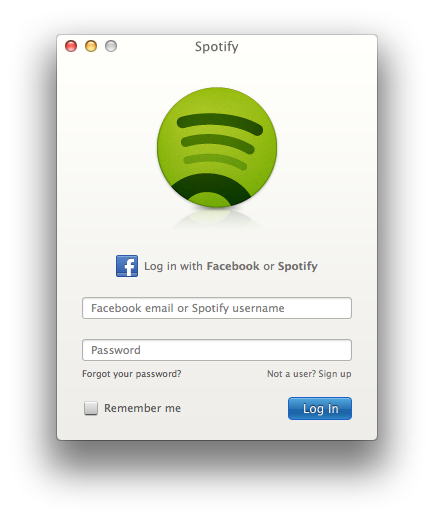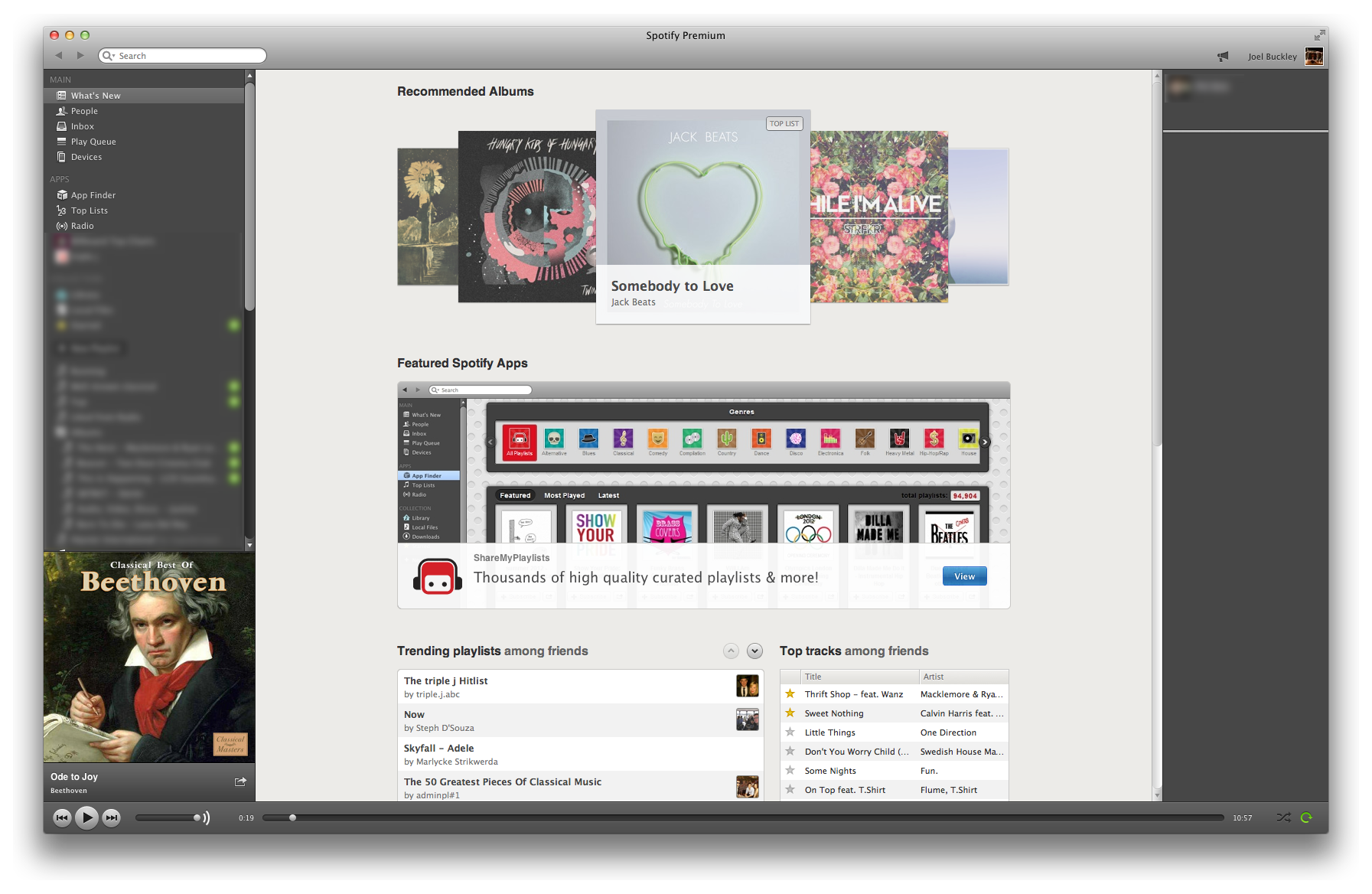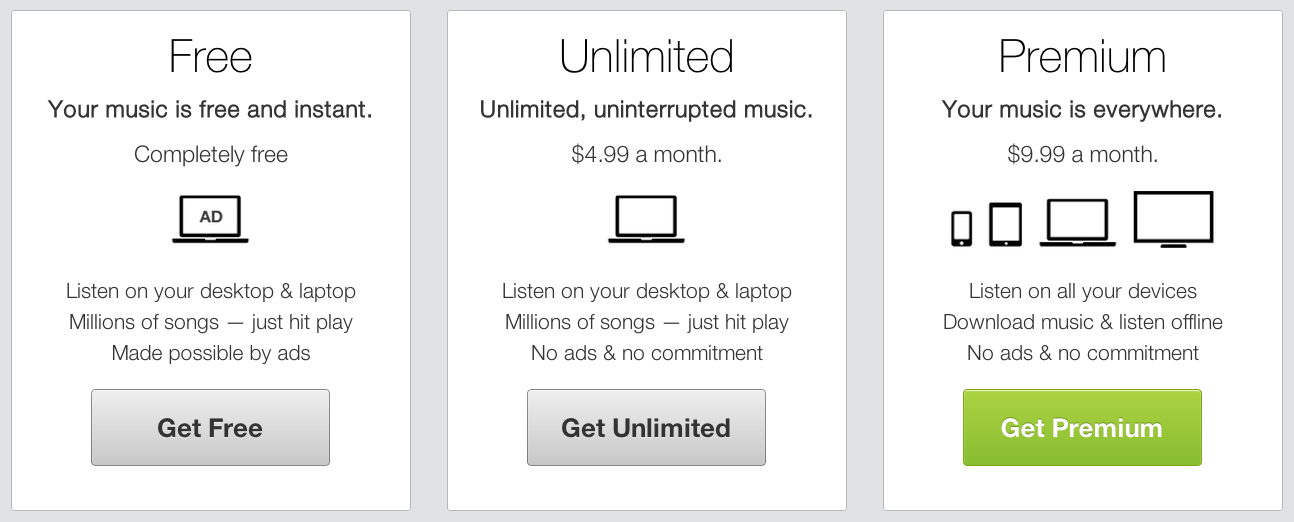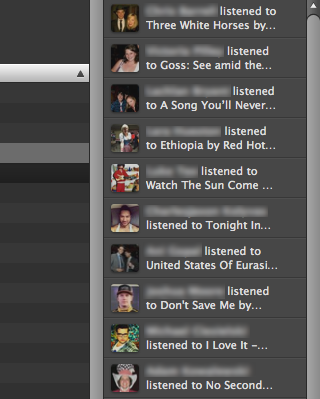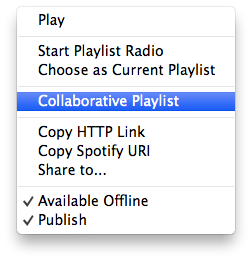Should I Get Spotify?
By now, you’ve likely heard of Spotify, the music streaming service that seems to directly compete with iTunes as the primary source for your music. I’ll detail a few of the aspects of Spotify, and hopefully leave you with a better overview of their product than their – sadly, uninformative – marketing material.
Sign-up
Spotify has partnered with Facebook, and so there is very much a preference for getting users to sign up with their Facebook account. From 26 September 2011, Facebook was the only means of signing in to Spotify; this has since been relaxed, although with the emphasis still very much on using Facebook credentials, it can be difficult to spot the link to sign up with your email address.
Whichever method you choose, you’ll immediately be given access to a ‘Free’ account, which gives you access to the entire Spotify catalogue, albeit with some caveats.
Main Interface
The main interface for Spotify is very different to iTunes, with which I am familiar, and so I know from experience that changing over can take a little getting used to. Playlists still exist on the left hand side, but there’s almost a web browser feel to the operation, in that you can skip backward and forward (the arrows for which are situated in the top left of the screen, pictured above), in case you get lost. You can always go back to the song in the current playlist you’re listening to by clicking on the icon in the lower left hand corner (in this case, Beethoven).
Starring
One feature I have grown accustomed to is the ability to ‘star’ songs. Unlike iTunes, where you can assign between 0 to 5 stars to individual songs, Spotify has a binary starring approach that allows you to highlight particular songs (or albums, which results in all tracks from that album being starred). These songs are automatically placed in the ‘Starred’ playlist. The way that you use this feature might vary to the way I do, but I have come to star songs that I want to listen to on high rotation. The ability in Spotify Premium (detailed below) to automatically download all songs in a playlist means that you can have ready access to all of your favourite songs, so even if your internet suffers an outage, you won’t have to go a single second without Totally Enormous Extinct Dinosaurs – if that’s your thing.
Accounts
Spotify offers it services over three echelons; Free, Unlimited, and Premium. Premium definitely offers value when you have a smartphone or tablet, and more so with an impending trip of series of trips in your car. The graphic does a fair job of explaining it.
Free – All of the music on your computer, with ads injected every now and then. If you mute your computer (or even take it down to 5% volume), the ads pause until your volume is raised above the threshold again. Unlimited – Like free version, but without the ads. Premium – The unlimited version, with the ability to download songs for offline listening, and full support for a range of smartphones.
Social
One of the major features of Spotify, particularly with its integration with Facebook, is its social nature. Whether you like it or not, you’ll receive a constant stream of information on your Facebook friends’ listening habits on the right hand side of your screen. Sometimes it’s interesting to see what those you see every now and then are listening to, but I don’t find it to be worth at least 10% of my screen real estate. Maybe this will be the final argument to convince you to remove all of those high school friends you never speak to, or maybe you’ll just deal with it.
Other features are much less intrusive. Collaborative playlists allow you to share playlists with people so that they too can add tracks. This sounds pretty perfect for a small group of friends working on playlists for an upcoming party, for example. One issue with this implementation – and something I’m sure Spotify will rectify in the fullness of time – is that there’s no ability to rescind collaboration permission for some of your peers. As long as you have collaborative playlists enabled, and your friend has the URL, they will be able to alter the playlist.
The Catalogue
The great strength of Spotify is the promise of endless music; if you can think of a track’s name, an artist, or an album, Spotify will have it. Unfortunately, the reality is a somewhat qualified version of this promise.
While Spotify does have a great deal to listen to, and continues to generally impress me in its offerings of music from before around 2012, there are some notable exceptions from its catalogue. AC/DC, The Beatles, and Led Zeppelin all have none of their work on the service. More recently, Rihanna’s Unapologetic and Taylor Swift’s Red are unavailable. This seems like more of a short-term ploy than a long-term stand against Spotify – both artists have older works available for streaming – but this kind of tack, if it catches amongst record companies, might be the one that holds Spotify from absolute saturation.
Should You Get Spotify?
If you’ve read this far, you’re not doubt interested in Spotify. The Premium service has a 30 day trial, which is what I’m currently using. I doubt that I’ll cancel it when the 30 days expires. Although I’ve not completely stopped using iTunes, I have considerably diminished its use in favour of Spotify. My one reservation, relating to Facebook sign-in, can be gotten around by signing up via your email address. This is definitely something that is worthwhile trying out.
